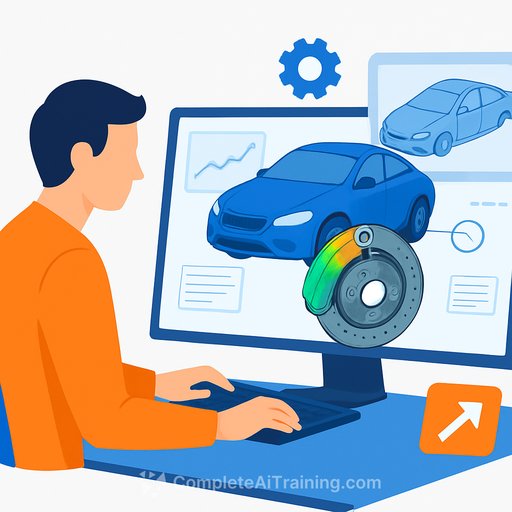Sumitomo Riko Cuts Simulation Time 10x with Ansys SimAI for Automotive Components
Product teams live on iteration speed. Sumitomo Riko adopted Ansys SimAI (part of the Synopsys portfolio) to cut certain physics simulations from hours to minutes while keeping high fidelity.
SimAI builds AI models from existing simulation data, then predicts mechanical, thermal, and chemical behavior in about five minutes per new design. That's more than an hour saved per iteration on parts like rubber bushes, isolators, and hoses.
What's new
- Over 10x faster cycles on select use cases, such as mechanical performance predictions for rubber bushes.
- No geometry parameterization required; teams feed prior analyses to train models.
- Accessible to experts and non-experts, creating a design-to-manufacturing workflow tied into PLM.
- Applies across anti-vibration design, battery cooling, magnetic field analysis, and mixing heat transfer.
Why it matters for product development
Early-phase speed expands the option set. With five-minute predictions that track with high-fidelity results, teams can evaluate more concepts before tooling or prototyping.
Less setup time and fewer specialist bottlenecks mean smoother handoffs across design, analysis, and manufacturing. That directly improves throughput and decision quality in PLM.
How it works in practice
SimAI analyzes legacy or new simulation runs and learns the mapping from geometry to performance-without manual parameter setup. The resulting models answer what-if questions fast, from stress and deformation to thermal and chemical effects.
Sumitomo Riko applies this to vibration isolators, hoses, and other rubber components that face extreme loads in suspension systems. The company is also collaborating with Ansys to automate workflows across design, manufacturing, and retirement.
Early results
Initial tests showed more than 10x gains on rubber bush simulations, with predictions in about five minutes and accuracy comparable to standard high-fidelity runs. That compresses iteration loops and helps teams converge on viable designs earlier.
Implementation checklist
- Inventory prior simulation datasets; standardize labels, materials, and units.
- Prioritize heavy-compute studies (e.g., non-linear mechanics, coupled thermal) that slow decisions.
- Train SimAI models per part family; validate against holdout cases and shop-floor measurements.
- Integrate model calls into CAD/CAE workflows and PLM gates; schedule updates as new data arrives.
- Enable access for non-experts with guardrails and templates; document limits, error bars, and escalation paths.
What leaders said
"Modern product development begins with quality data and leading simulation solutions," said Walt Hearn, senior vice president of worldwide sales and customer excellence at Ansys, part of Synopsys. "One of the biggest challenges in R&D is balancing speed and accuracy during the early design phase. Ansys AI capabilities enable lightning-fast predictions, regardless of how large or complex the computation is, so that customers can make data-driven decisions before prototyping begins."
Where to learn more
Explore Ansys and Synopsys simulation solutions at synopsys.com. For skill-building on practical AI for product teams, see AI courses by job.
Your membership also unlocks:






